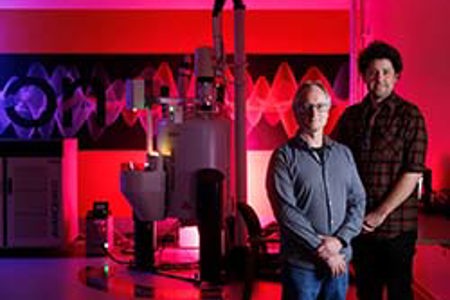
Scion has unveiled a $3.6 million upgrade in the form of two new Nuclear Magnetic Resonance (NMR) spectrometers. This allows scientists to delve deeper into the molecular structure of materials, enabling supporting New Zealand’s forest-based bioeconomy.
Understanding the molecular composition of materials is fundamental to everything researchers do in chemistry, biotechnology and materials science, and an essential part of developing products to replace those made from fossil fuels, says Dr Stefan Hill, Portfolio Leader for High-Value Biorefineries at Scion.
He says the upgrade supports Scion’s forestry bioeconomy and advanced manufacturing research and gives industry and academia access to this technology. The technology is also commercially available to organisations wanting Scion to analyse samples of bio-based products and plant materials on their behalf.
“This upgrade positions us at the forefront of scientific innovation and ensures we can continue to meet the needs of our national and international collaborators.
“We consciously invested in technology that ensures we are equipped to meet our current and future research needs - and to consider what the wider New Zealand research landscape needs,” Dr Hill says.
Scion’s upgraded technology includes 600 MHz solution-state and 500 MHz solid-state NMR spectrometers. Scion now has New Zealand's only dedicated solid-state instrument, including semi-solid-state materials.
The spectrometers are used to analyse the chemical structure of compounds by measuring how their atomic nuclei behave in high-powered magnetic fields. The nuclei interact with the magnetic fields and produce radio waves at particular frequencies, depending on how their atoms are arranged in the molecules they make up.
Dr Hill says NMR is used to detect these different frequencies, much like tuning a radio to different stations. “Each frequency reveals specific information about the atom’s environment. With these frequencies, we can map out the entire molecular structure, learn how the molecule functions and how it can be used in new ways.”
The advanced equipment features the latest generation of superconducting magnets, which provide superior sensitivity and resolution for more accurate test results.
Practical applications include checks for the presence and function of additives, analysis of feedstocks for manufacturing, and determination of the authenticity and origin of naturally derived products. This non-destructive analytical technique can also underpin the development of sustainable products, including bio-based adhesives and plastics, bio-fuel research and new ingredients for cosmetics and nutraceuticals (food or parts of food that provide medical or health benefits).
" 'It supports our research and strengthens the resilience of New Zealand’s broader science infrastructure."
Scion’s previous NMR spectrometers, installed in 1999, served their purpose but had reached the end of their operational life.










